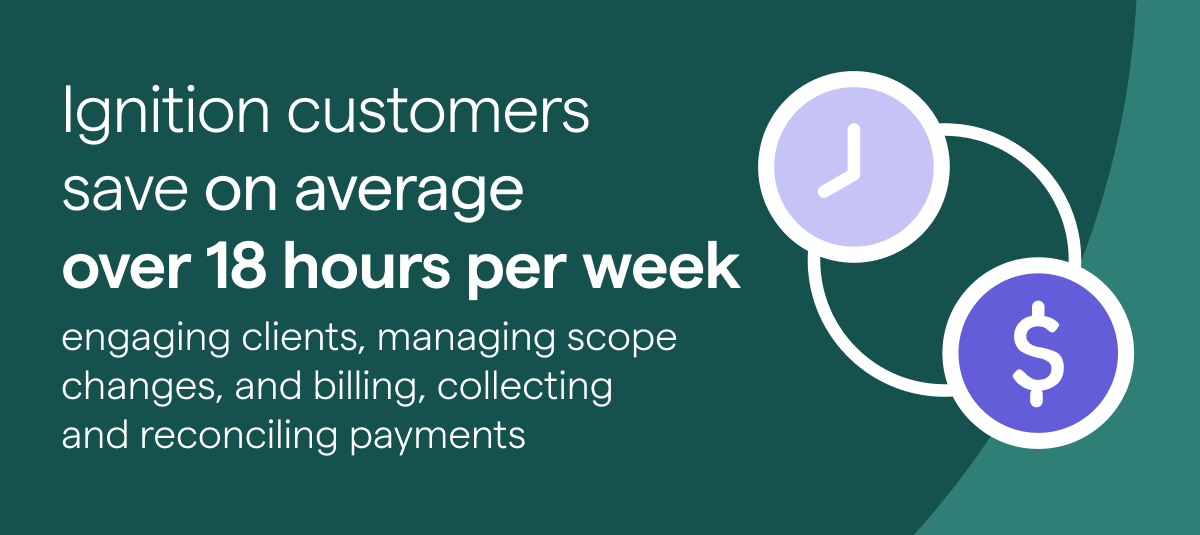How to fire a bad client (politely)

Most of your clients are probably fantastic. They bring you interesting projects, they learn and adapt based on your recommendations, they teach you interesting new things and allow you to grow and challenge yourself.
But throughout the life of your business, you’ll come across some clients who are difficult to work with. They may question the work you do for them, start arguments with you or your team incessantly, put pressure on you to deliver work, refuse or consistently forget to give you the information you need. Because of this turbulent relationship they may undermine your work or blame you and, in some cases refuse to pay.
When a client becomes a bigger hassle than the money they bring in is worth to you, it’s time to make the tough call and end the client relationship.

But how do you fire a client without this negatively impacting your business? In this guide you will learn when it’s time to end a business relationship and how to do so politely – and without the negative fallout.
Bad clients are costing you money
Often we feel as though we need to just deal with these difficult clients because they’re part of doing business. After all, if they’re paying the bills, then what does it really matter in the end?
Not true. Your bad clients can actually end up costing you money. If they consistently pay late or haggle over fees, they inevitably end up interrupting your cash flow. If they’re constantly requesting changes or failing to provide necessary documents, they eat into the time you have to devote to other clients or to growing your business.
They can also damage your reputation. Nightmare clients may refuse to listen to your advice, and then complain when they don’t get the results they expected. If that client has a large audience, their complaints may reach others in your industry and may cause them to reconsider partnerships with you.
THAT'S AWKWARD: Watch these accountants describe their awkward client conversations
And if they’re just a nightmare to work with and they’re bullying your team, they create additional stress. Employees with high stress levels may engage less, be less productive, and take more sick leave than workers who are content. Eliminating the source of this stress will improve morale and productivity, and that has a positive impact on your business.
When bad clients hurt your team, your culture, and your bottom line it may be time to let them go. Putting off having awkward and uncomfortable conversations with clients can have significant financial implications for the practices, as Ignition’s State of client engagement report shows.
Of accountants and bookkeepers who have avoided or delayed awkward client conversations, in the United States alone, two in five say consequences include loss of potential income for the business, with 35 percent citing cash flow pressures. Sadly, one in five say they had to close or shut down part of their business due to profitability issues.
Is the client relationship salvageable?
Where there are challenges in the client relationship there are also often opportunities. Having an open and honest conversation with your client could save the relationship. The cost of acquiring a new client is five times higher than the cost of retaining one, so it’s worth giving it a try.
There are a number of questions you can ask yourself and your employees to determine if the client relationship is worth saving or if that ship has long since sailed:
Do you need this client? If firing or losing this client would have a significant impact on your bottom line then it’s time to look at how you can mediate and save the relationship.
Has there been consistent communication? Regular communication with clients is essential for maintaining a strong client relationship. If your client is failing to get back to you, not providing the required documents or information, it can be almost impossible to do the work they have requested. In these situations draw a line in the sand and establish expectations and timeframes, state the importance of the deadlines and that work can’t progress until this information is received.
Have you met all of your obligations? Check the contract or engagement letter, ensure all reasonable efforts have been made to complete all of the work. Where possible, complete all contracted work before terminating the engagement.
Is the relationship past the point of no return? Not all clients are a lost cause. There are a number of steps you can take to salvage a difficult client relationship. Take every opportunity to resolve the issue before moving on to serious discussions on terminating the relationship.
How to identify a bad client
There are a number of ways to identify the types of clients you may not want to continue working with. Often these are obvious signs, such as not seeing eye-to-eye on project priorities, constant changes to the scope of work, questioning your prices and charges on invoices or regularly failing to pay on time.
Below are several different types of ‘nightmare’ clients you might have encountered or could be currently contending with. While these are generalizations, and every client is different, you may be able to spot some familiar patterns of behavior.
The ‘I needed it yesterday’ client. This type of client believes that just discussing an idea means the work will get done immediately. They don't seem to be aware of the fact you have other clients who aren’t them. Every project they have is extremely urgent – however, they will often get held up for approval on their end. No matter how many times you try to set appropriate expectations, this client just doesn’t get it.
The client who always pays late (but demands the world). This type of client seems professional and put-together, but not only are they extremely demanding – requesting multiple revisions and lots of attention from your team – when it comes time to paying the bill only then do they mention they’re having cash flow issues. They argue about every cent you’re charging and become so belligerent you end up knocking the price down just to get rid of them.
See how much this is impacting accounting firms. Download the state of client engagement report.
The ‘well that’s not my fault’ client. This client seems to love the sound of their own voice. They love talking over people, regularly interrupt you and your team, and they love to blame other people when things go wrong – loudly and in front of their colleagues. This type of client delights in making others feel small. Your staff are terrified of them and are all mysteriously ‘out to lunch’ whenever they come to the office.
The client who doesn’t know what they want. Even if the fate of the world was at stake, they couldn’t decide between option A or option B. This client can’t choose a package, can’t decide on which services they need, can’t confirm or agree to anything, and will procrastinate to the point where deadlines get missed and you actually forget they’re a client.
The unicorn in disguise. On the surface this client appears to be the perfect dream client, dangling the most amazing opportunities in front of your face… that never actually happen. They know they are a mythical creature you desperately want to obtain, so they will dangle that promise in front of you and get you to jump through hoops, complete quests and bow to their might and majesty. Then, just when you think they’re within reach… they disappear without a trace.
The one who thinks they’re the expert. They seem like a great client at first – they’re talkative, keen to learn, and excited about the work you’re doing together. But then they take the work you’ve done and chop it up, add things to it and twist it all around. By the time they’re done it bears no resemblance to the project that was initially conceived. What’s more, they made mistakes and invalidated much of your work, then had the nerve to blame you when they didn't get the results they were after.
Whatever form your nightmare clients take, the key things to watch out for are clients who:
Don’t respect your time.
Constantly check up on you.
Make regular demands for unreasonable changes to the scope of work.
Disrespect you or your team.
Expect results you can’t possibly deliver.
Act irrationally and unprofessionally.
Believe they can do your job better than you can.
Are envious of you or another client’s success.
Lack effective communication skills.
Frequently miss deadlines.
Regularly pay late, haggle over bills or refuse to pay at all.
You might also like: 10 Client communication tips to implement in your business.
How to fire a client: The approach
Ending a business relationship with a client can be an emotionally-charged situation. Decide if it’s best carried out in-person, via email or on the phone. The situation varies from client to client, and your level of comfort communicating with them through any of these channels. Ensuring you’re prepared for the conversation, is more likely to produce a better outcome.
Stay calm, rational and polite and clearly state the reasons for terminating the relationship, but keep emotion and name-calling out of the conversation. If a follow-up is needed, give them a phone call so nothing is lost in translation. You can start the process with an email, but you should follow-up with a phone call to talk your client through the process and answer any questions they may have.
Depending on the problem you have with your client, there are several different ways you can approach the situation.

When firing a client, always:
Check your contract or engagement letter. What terms do you have in place to fire a client? Make sure you strictly adhere to what you’ve included in your contract.
Maintain your integrity. Stay calm, rational and polite. Give reasons for terminating the relationship, but keep emotion and name-calling out of the conversation.
Follow-up with a phone call. You can start the process with an email, but you should follow-up with a phone call to talk your client through the process and answer any questions.
Resist the urge to engage. If your client tries to make you angry, don’t give in. Maintain your cool and stay on the topic of business. Don’t resort to personal attacks.
Give them a referral. If you think the client may be a better fit for another accounting practice, consider referring them to that firm.
Finish the project, if at all possible. Try not to leave a client hanging in the middle of an important project. If you can’t finish it, find a service partner who can and refer them on.
Email examples and scripts for firing a client
Below we have provided examples for firing a client, complete with some sample email templates and scripts to start the process of ending a business relationship.
The straight talk
When the scope of the project has changed drastically from what was originally agreed upon it can create additional stress within your team. While this client may not be the best fit for your business this is a great opportunity to save face by providing an alternative that works for both parties.
Sit down with your client and in clear and diplomatic language explain that you can’t deliver on their expectations and that while you aren’t the right fit for each other you know a business who would be suitable for their needs.
To start the conversation, you might say something like:
Dear [client name]
Unfortunately, we have had to make the difficult decision to terminate our contact effective from [your chosen date].
Due to the recent problems and delays with your project, it’s come to our attention that we’re not a good fit for each other. Your requirements are outside of the scope of what we do as a company. We’d like to recommend [referred company], who have a focus on the [specific project requirement/s] side and might be a better fit for your needs.
In the meantime, we will be finalizing any outstanding work, providing any remaining deliverables and preparing the account for closure.
If you’d like to discuss this further, I’d be happy to discuss the situation over the phone or in person. Thank you very much for your business, and I wish you all the best for the future.
Yours sincerely
[Your name]
This letter outlines that the reason for the breakdown of the relationship was due to the project delays and issues, but without casting blame. By emphasizing that you both aren’t a good fit for each other and providing a thoughtful referral, it shows that you bear no ill-will and still want them to succeed.
The excuse
Even if you want to give the client some information about the difficulties you’re facing with them in certain situations, you know that just won’t work. Instead, a convenient excuse will enable you to exit the relationship without confrontation.
Here’s a sample email you could use:
Dear [client name]
In light of recent changes in the business I need to let you know that as of [chosen date], [company name] will no longer be able to offer you [insert services here].
Our company is moving in a new strategic direction, and unfortunately this means closing off some of our current accounts, which unfortunately has included yours.
I sincerely apologize for any convenience this may cause. We are recommending our clients speak to [recommended business], who have packages that should meet your needs.
Thank you so much for your business over the years. We wish you all the best for the future.
Yours sincerely
[Your name]
Find out how to create a client termination or disengagement letter in Ignition.
The fee increase
If you’re firing a client purely because of the numbers, increasing fees or adding additional charges for excessive support or administration requests could actually solve the problem. The client may even agree to the increased charges and become profitable again. If not, you can shift your focus to bringing in more profitable clients who have a larger budget.
Here’s a sample of a fee-increase email:
Dear [client name]
I’m writing to you to let you know that as of [chosen date], our fees for some of our services will be increasing. You can see the new fee structure on our website [provide a link to the new pricing here].
As this includes [the service your client is currently using], I’m giving you advanced notice to allow you the time to decide if you’d like to continue using our services at the new price. Please feel free to contact me if you’d like to discuss further.
Yours sincerely
[Your name]
How to prevent and avoid bad clients in the future
Now that you’ve gone through the process of firing a client, it might feel like a weight has been lifted off your shoulders. It’s great that you’ve taken this step. Now is a great time to reflect on what caused the breakdown in your relationship with this client and whether there are any steps you can take to prevent it happening in the future.
Consider:
Improving your qualification and onboarding process. Most client problems occur because the client has expectations that don’t match the service you’re providing. Look at ways you can disqualify clients who don’t match your ideal profile before they sign up for your services, and create a more thorough client onboarding process to demonstrate the results they should expect.
Re-evaluate your pricing. You may have gated yourself into a fee structure with clients that means you don’t have a lot of wiggle room when clients require more of your time. We recommend re-evaluating your fees annually and adjusting charges for excessive support or changes to scope to avoid absorbing the costs of out of scope requests.
Prioritize your client list. Xero has a useful guide on prioritizing clients into A, B, C, D, and E categories, to help you better understand the types of work you’re attracting and whether you have too many bad clients on your lists.
Look for reliable lead-gen sources. Where are you finding your clients? Are you getting too many of these difficult clients from certain sources? Look for new strategies to source the kind of clients you actually want to work with.
Over to you
We all deal with bad clients every now and then. The key is to identify them early on and plan an exit strategy that lets you leave with your dignity and integrity intact. If 90% of your clients are amazing, then they deserve your time and energy to help them reach their goals.
Watch a demo to find out how you could free up hours of valuable time every week with Ignition.

Editor’s note: This post was originally published in May 21st 2018 and has been revamped and updated for accuracy and comprehensiveness.

